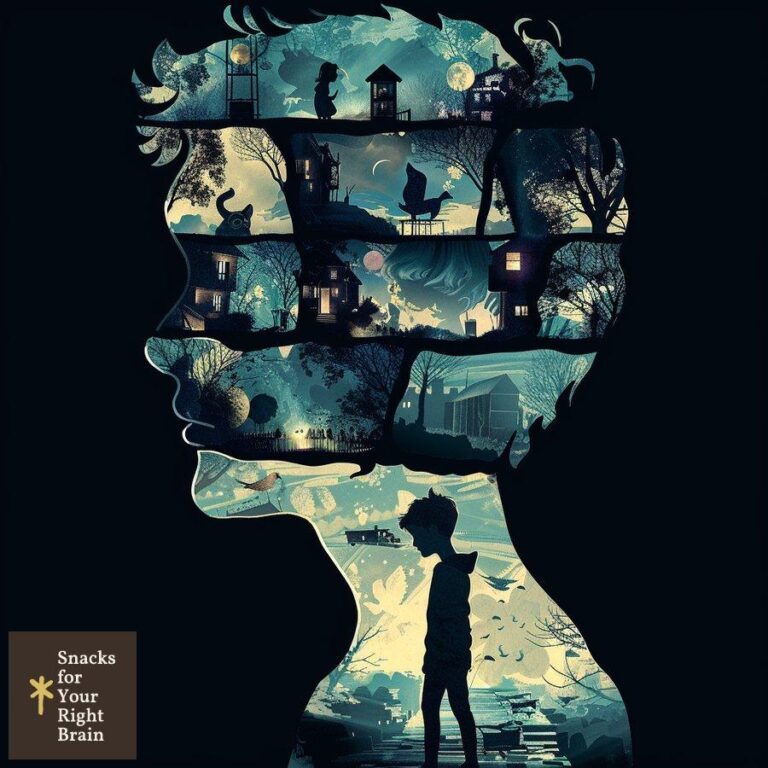What Are the Resolution in a Short Story
What is the resolution in a short story?
The resolution in a short story represents the conclusion where the main conflict reaches its outcome. It is the point at which the narrative’s tension dissipates, providing closure to the characters’ arcs and plot developments. This final segment of the story answers lingering questions, resolves conflicts, and often reveals the consequences of the characters’ choices.
In essence, the resolution serves as the narrative’s denouement, tying together various plot threads and allowing readers to reflect on the journey they have experienced. It encapsulates the emotional and thematic essence of the story, often leaving a lasting impression on the reader.
Why is resolution important in short fiction?
The resolution is vital in short fiction for several reasons:
-
Closure: It provides a sense of completion, allowing readers to feel satisfied with the story’s outcome.
-
Character Arc: The resolution highlights the growth or change in characters, showcasing how they have been affected by the events of the story.
-
Theme Reinforcement: It reinforces the central themes, giving readers a deeper understanding of the narrative’s message.
-
Emotional Impact: A well-crafted resolution can evoke strong emotions, leaving readers with a memorable experience.
The importance of resolution lies in its ability to bring together the various elements of the story, ensuring that the reader walks away with a clear understanding of the narrative’s intent and implications.
How does resolution differ between short stories and novels?
The resolution in short stories and novels serves similar purposes, but the execution and depth can vary significantly due to the differing lengths and complexities of the narratives.
| Aspect | Short Stories | Novels |
|---|---|---|
| Length | Typically concise, requiring a swift resolution. | More expansive, allowing for detailed resolutions. |
| Complexity | Focused on one primary conflict or theme. | Can involve multiple subplots and conflicts. |
| Character Development | Limited space for character arcs; resolutions may be abrupt. | More room for nuanced character development and gradual resolutions. |
| Reader Engagement | Relies on immediate emotional impact. | Can build tension over a longer period, leading to a more gradual release. |
Short stories often require resolutions that are succinct yet impactful, while novels can explore resolutions in greater detail, allowing for more complex character interactions and thematic explorations.

What are the elements of an effective short story resolution?
An effective short story resolution typically includes several key elements:
-
Conflict Resolution: It should address the main conflict presented in the story, providing clarity on how it has been resolved.
-
Character Outcomes: The resolution should reveal the fates of the main characters, illustrating their growth or decline.
-
Theme Reinforcement: It should encapsulate the story’s central themes, offering insights that resonate with the reader.
-
Emotional Resonance: A strong resolution evokes emotions, leaving a lasting impression on the reader.
-
Clarity: It should provide clear answers to the narrative’s questions, ensuring that readers understand the implications of the story’s events.
These elements work together to create a satisfying conclusion that resonates with readers, reinforcing the story’s overall impact.
How can authors address the main conflict in the resolution?
Authors can address the main conflict in the resolution through various strategies:
-
Direct Confrontation: Characters may confront the source of conflict directly, leading to a clear resolution.
-
Character Choices: Decisions made by characters can lead to the resolution of the conflict, showcasing their growth and development.
-
Consequences: Highlighting the consequences of characters’ actions can provide closure to the conflict, illustrating the impact of their choices.
-
Symbolic Actions: Authors can use symbolic actions to represent the resolution of conflict, providing deeper meaning to the conclusion.
By employing these strategies, authors can effectively resolve the main conflict, ensuring that readers feel a sense of closure and understanding.
What role does character development play in the resolution?
Character development is crucial in the resolution as it reflects the journey characters have undergone throughout the story. The resolution showcases how characters have changed, what they have learned, and how their experiences have shaped their identities.
-
Transformation: Characters may experience significant transformations, leading to new perspectives or behaviors that are evident in the resolution.
-
Revelation: The resolution often reveals insights or realizations that characters have gained, providing depth to their arcs.
-
Emotional Growth: The resolution can highlight emotional growth, illustrating how characters have dealt with their conflicts and challenges.
-
Relationships: Changes in relationships among characters are often emphasized in the resolution, showcasing the effects of the narrative’s events.
Through effective character development, the resolution becomes a powerful moment that encapsulates the essence of the characters’ journeys, allowing readers to connect with their experiences.
How can the resolution reinforce the story’s theme?
The resolution plays a pivotal role in reinforcing the story’s theme by encapsulating its core messages and insights. Authors can achieve this through several techniques:
-
Symbolism: Utilizing symbols that resonate with the theme can enhance the resolution, providing deeper meaning to the conclusion.
-
Character Actions: The choices characters make in the resolution can reflect the story’s theme, illustrating its relevance to their lives.
-
Final Imagery: The imagery presented in the resolution can evoke the theme, leaving readers with a visual representation of the narrative’s core ideas.
-
Dialogue: Conversations in the resolution can explicitly address the theme, allowing characters to articulate the lessons learned.
By integrating these techniques, authors can create a resolution that not only concludes the narrative but also reinforces its thematic significance, leaving readers with a profound understanding of the story’s message.
What types of resolutions are common in short stories?
Short stories often feature various types of resolutions, each serving different narrative purposes. Common types include:
-
Closed Resolutions: These provide a clear and definitive ending, resolving all conflicts and answering all questions.
-
Open Resolutions: These leave some questions unanswered, allowing readers to interpret the outcome and engage with the story on a deeper level.
-
Ambiguous Resolutions: These create uncertainty, prompting readers to ponder the implications of the story’s events and the characters’ futures.
-
Twist Resolutions: These introduce unexpected turns, surprising readers and altering their understanding of the narrative.
Each type of resolution offers unique opportunities for engagement, allowing authors to craft endings that resonate with their intended themes and emotional impacts.
How do closed endings differ from open endings?
Closed endings and open endings represent two distinct approaches to concluding a narrative, each offering different experiences for readers.
| Aspect | Closed Endings | Open Endings |
|---|---|---|
| Clarity | Provides clear resolution to conflicts. | Leaves questions unanswered, inviting interpretation. |
| Reader Satisfaction | Often leads to a sense of completion. | Can create a sense of ambiguity or contemplation. |
| Character Outcomes | Clearly defines characters’ fates. | Leaves characters’ futures uncertain. |
| Thematic Closure | Reinforces themes through resolution. | Encourages exploration of themes beyond the text. |
Closed endings typically offer a sense of closure and satisfaction, while open endings invite readers to engage with the narrative’s implications, fostering deeper reflection on the story’s themes and characters.

What is a twist ending and when is it effective?
A twist ending is a narrative conclusion that introduces an unexpected turn of events, altering the reader’s perception of the story. It can be effective in several scenarios:

-
Surprise Factor: When the twist is well-foreshadowed, it can surprise readers while still feeling earned, enhancing the overall impact of the narrative.
-
Theme Exploration: Twist endings can illuminate themes in a new light, prompting readers to reconsider the story’s messages.
-
Character Revelation: They can reveal hidden aspects of characters, deepening the reader’s understanding of their motivations and actions.
-
Emotional Impact: A twist ending can evoke strong emotions, leaving readers with a memorable conclusion that lingers in their minds.
For a twist ending to be effective, it must be carefully crafted and integrated into the narrative, ensuring that it feels both surprising and satisfying.
How can authors foreshadow the resolution throughout the story?
Foreshadowing is a powerful technique that authors can use to hint at the resolution throughout the story. Effective foreshadowing can create anticipation and prepare readers for the conclusion. Techniques include:
-
Subtle Clues: Incorporating hints or symbols that allude to the resolution can create a sense of inevitability.
-
Character Dialogue: Characters may make statements or express beliefs that foreshadow their eventual outcomes.
-
Recurring Motifs: Utilizing motifs that appear throughout the narrative can reinforce the themes and lead to the resolution.
-
Plot Developments: Events that seem minor at first may later connect to the resolution, creating a cohesive narrative structure.
By skillfully employing foreshadowing, authors can enhance the resolution’s impact, making it feel like a natural culmination of the story’s events.
What techniques create a compelling and satisfying resolution?
Creating a compelling and satisfying resolution involves several techniques that can enhance the reader’s experience:
-
Emotional Closure: Ensuring that emotional arcs are resolved can leave readers feeling fulfilled.
-
Thematic Resonance: Reinforcing the story’s themes through the resolution can deepen its significance.
-
Character Growth: Highlighting character development and growth can provide a satisfying conclusion to their arcs.
-
Surprise Elements: Introducing unexpected twists or revelations can keep readers engaged until the very end.
-
Clear Outcomes: Providing clarity on the fates of characters and conflicts can enhance the overall satisfaction of the resolution.
By combining these techniques, authors can craft resolutions that resonate with readers, leaving a lasting impression.
How can symbolism and imagery enhance the resolution?
Symbolism and imagery play significant roles in enhancing the resolution by adding layers of meaning and emotional depth. Authors can utilize these elements in the following ways:
-
Symbolic Objects: Objects that carry symbolic weight can represent themes or character journeys, providing a deeper understanding of the resolution.
-
Imagery: Vivid imagery can evoke emotions and create a lasting visual impression, reinforcing the story’s themes.
-
Metaphors: Employing metaphors in the resolution can encapsulate complex ideas, offering readers a richer interpretation of the narrative.
-
Contrast: Juxtaposing images or symbols can highlight changes in characters or themes, emphasizing the resolution’s significance.
Through effective use of symbolism and imagery, authors can create resolutions that resonate on multiple levels, enhancing the reader’s emotional and intellectual engagement.
What are common pitfalls to avoid when writing short story resolutions?
When crafting resolutions, authors should be mindful of several common pitfalls that can detract from the overall impact:
-
Rushed Conclusions: Avoid hurrying the resolution; it should feel earned and reflective of the story’s journey.
-
Unresolved Conflicts: Leaving major conflicts unresolved can frustrate readers and diminish satisfaction.
-
Inconsistent Character Arcs: Ensure that character outcomes align with their development throughout the story.
-
Overly Ambiguous Endings: While some ambiguity can be effective, excessive vagueness may leave readers feeling unsatisfied.
-
Neglecting Themes: Failing to address the story’s themes in the resolution can weaken its overall message.
By steering clear of these pitfalls, authors can create resolutions that enhance the narrative’s impact and resonate with readers.
How can authors balance surprise and inevitability in the resolution?
Balancing surprise and inevitability in the resolution is crucial for creating a satisfying conclusion. Authors can achieve this through the following strategies:
-
Foreshadowing: Incorporating subtle hints throughout the story can create a sense of inevitability while still allowing for surprising elements.
-
Character Consistency: Ensure that character actions in the resolution align with their established motivations, making surprises feel earned.
-
Layered Revelations: Introduce surprises that add complexity to the resolution without contradicting previous events.
-
Emotional Resonance: Focus on emotional truths that resonate with readers, allowing for surprises that feel authentic and impactful.
By effectively balancing these elements, authors can craft resolutions that surprise readers while also providing a sense of closure and coherence.
What makes a short story resolution memorable?
A memorable short story resolution often incorporates several key elements:
-
Emotional Impact: Resolutions that evoke strong emotions tend to linger in readers’ minds.

-
Thematic Clarity: Clearly articulating the story’s themes can leave a lasting impression.
-
Character Growth: Demonstrating significant character development can resonate with readers, making the resolution feel meaningful.
-
Unexpected Twists: Introducing surprising elements can enhance the resolution’s memorability.
-
Symbolic Closure: Utilizing symbols or imagery that encapsulate the story’s essence can create a powerful concluding moment.
By integrating these factors, authors can create resolutions that not only conclude the narrative but also leave a lasting mark on readers.
How does the resolution impact the overall reader experience?
The resolution significantly impacts the overall reader experience by shaping how readers perceive the story. A well-crafted resolution can:
-
Provide Closure: It offers a sense of completion, allowing readers to feel satisfied with the narrative.
-
Enhance Emotional Engagement: A strong resolution can evoke emotions, deepening the reader’s connection to the story.
-
Reinforce Themes: It can clarify and reinforce the story’s themes, prompting readers to reflect on its messages.
-
Influence Interpretation: The resolution can shape how readers interpret the events and characters, affecting their overall understanding of the narrative.
Ultimately, the resolution serves as the culmination of the reader’s journey, influencing their lasting impressions and interpretations of the story.
What exercises can help authors improve their resolution writing skills?
Authors looking to improve their resolution writing skills can engage in several exercises:
-
Analyze Resolutions: Read short stories and analyze their resolutions, noting what works well and what doesn’t.
-
Write Multiple Endings: For a single story idea, write multiple resolutions to explore different outcomes and their impacts.
-
Character Reflection: Create character profiles that outline their arcs and how they should resolve by the story’s end.
-
Foreshadowing Practice: Write scenes that incorporate foreshadowing elements, ensuring they lead naturally to the resolution.
-
Feedback Sessions: Share stories with peers and seek feedback specifically on the resolution, focusing on clarity and emotional impact.
These exercises can help authors refine their skills, leading to more effective and engaging resolutions in their short stories.






